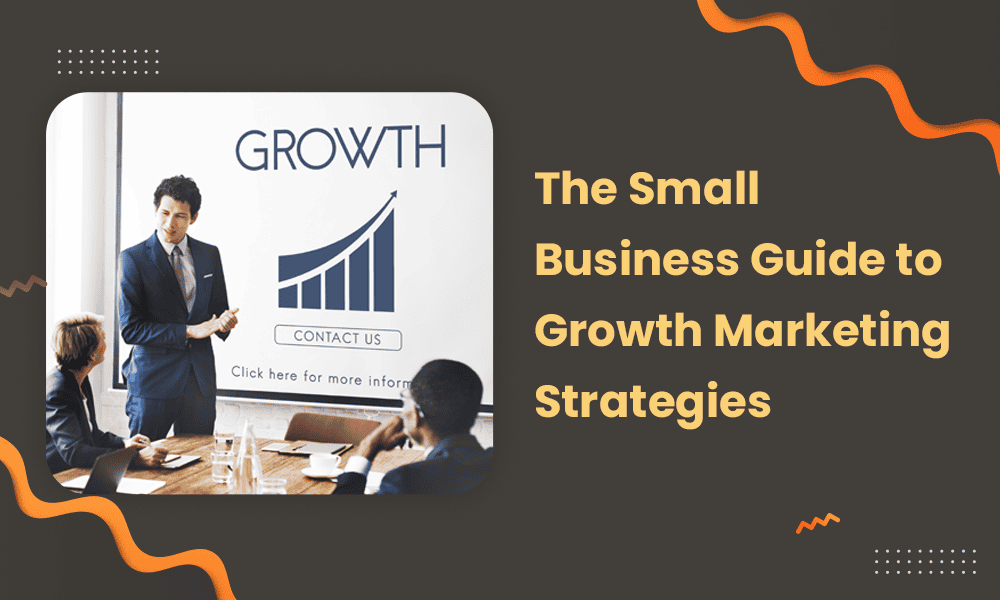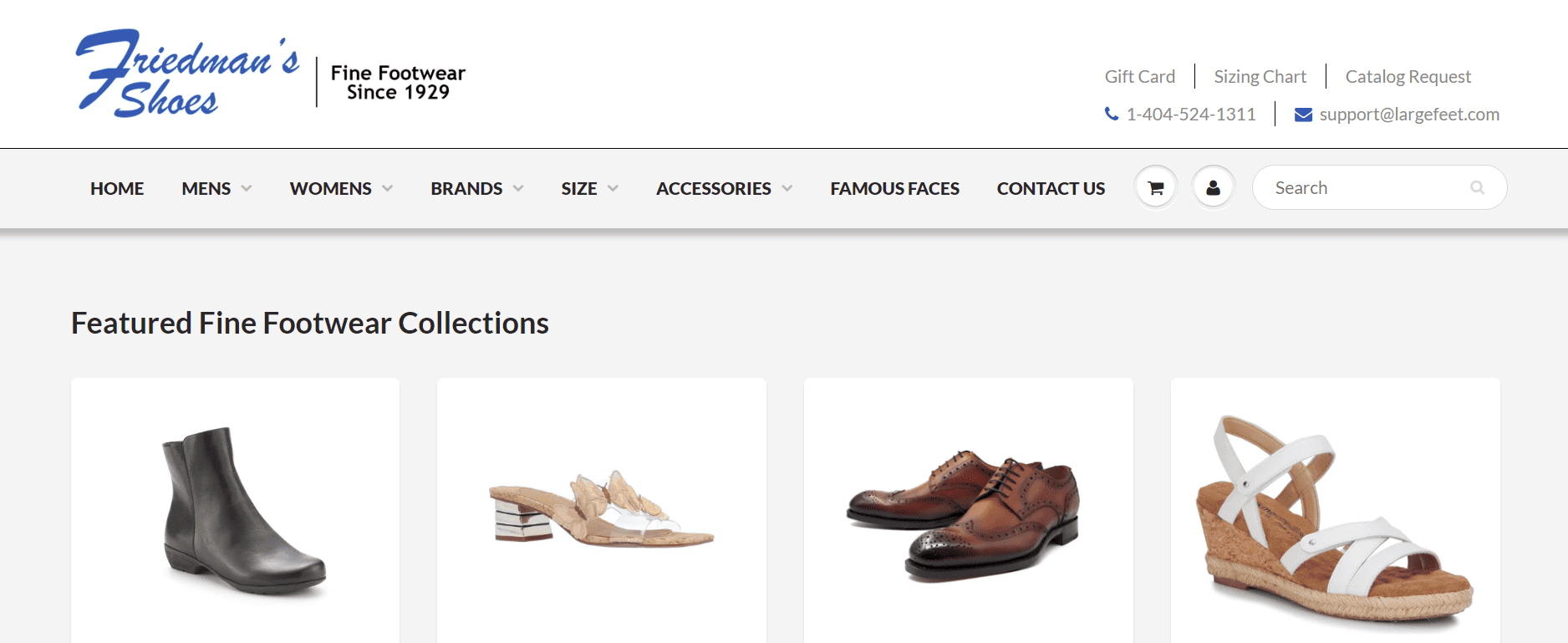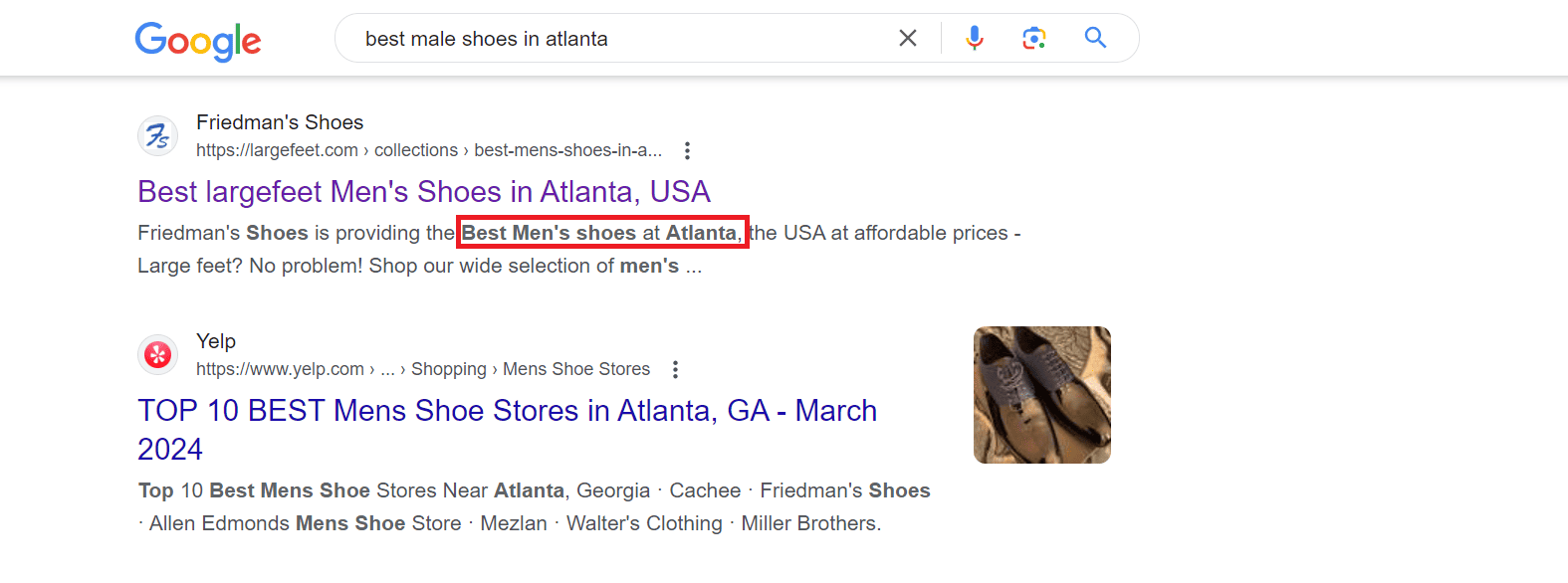Today’s marketplace is competitive, and customers are spoiled by the many options available. To succeed, small businesses just starting up need effective growth marketing strategies to convert their target audience into a community of loyal customers in the shortest possible time.
In this article, we shall discuss:
- What is growth marketing and its significance to small businesses
- The growth marketing framework, including the AARR model
- Key growth marketing strategies for small businesses
- How to implement a growth marketing strategy
At the end of this blog post, you’ll be able to implement a successful growth marketing strategy and improve customer lifetime value.
Let’s dive in.
Table of Contents
What is Growth Marketing?
Growth marketing is a digital marketing approach that focuses on driving sustainable business growth through experimentation, customer data, and rapid iteration. While traditional marketing focuses on fixed strategies and channels, growth marketing focuses on continuous testing and optimization to achieve scalable and measurable results.
Growth marketing is perfect for small businesses because it adapts to the customer’s ever-changing needs. It is a fluid approach to marketing that relies on data for the entire customer journey, from product modification to marketing channels and messaging. Because growth marketing prioritizes data-driven strategies, it is more efficient and sustainable than traditional marketing methods.
Growth marketing vs traditional marketing
The table below summarizes the key differences between growth marketing and traditional marketing.
|
Aspects |
Growth marketing |
Traditional marketing |
|
Approach |
Agile and iterative, focuses on experimentation |
Fixed and linear, relies on established strategies |
|
Data Utilization |
Relies heavily on data for decision-making |
Uses market research but may not prioritize real-time data analysis |
|
Audience Targeting |
Highly targeted, emphasizes personalized experiences |
Broad targeting, often reaches a wider but less engaged audience |
|
Channel Flexibility |
Adaptable to emerging channels and trends |
Relies on traditional channels (TV, print, radio) |
|
Measurement Metrics |
Focuses on specific metrics (CAC, LTV, retention rate) |
Uses traditional metrics (impressions, reach, frequency) |
Components of Growth Marketing
Growth marketing encompasses various components that work together to drive sustainable business growth. Here are some key elements that successful growth marketing teams employ.
Data analysis and insight
Growth marketing teams rely heavily on data analysis to understand customer behavior, identify trends, and uncover opportunities to draw potential customers. This includes gathering and analyzing data from various sources, such as website analytics, customer interactions, and marketing campaigns.
Experimentation and testing
Growth marketing emphasizes a culture of experimentation, where your marketing team continuously tests different strategies, tactics, and messages to identify what resonates best with your audience. This may involve A/B testing, multivariate testing, and other experimentation methods to optimize marketing performance.
Conversion Rate Optimization (CRO)
A strong growth marketing strategy focuses on the conversion journey to maximize the likelihood of users’ desired actions, such as purchasing, signing up for a newsletter, or requesting more information. This includes optimizing website design, user experience, and messaging to improve conversion rates.
Product-led growth
Many growth marketing strategies are centered around the product itself, leveraging product features, user experience enhancements, and product-led marketing tactics to drive growth and boost your customer retention rate. This approach focuses on delivering value to users and encouraging organic growth through word-of-mouth and referrals.
Metrics and analytics
Growth marketing relies on key performance indicators (KPIs) and analytics to measure the effectiveness of marketing efforts and track progress toward growth goals. Common metrics include customer acquisition cost (CAC), lifetime value (LTV), retention rate, churn rate, and engagement metrics.
Cross-functional collaboration
Effective growth marketing often involves collaboration across multiple organizational teams, including marketing, product, engineering, data analytics, and customer support. This cross-functional collaboration ensures the alignment of goals and strategies and enables a holistic approach to driving growth.
These components combine to create a comprehensive marketing approach that drives strong customer relationships and sustainable business growth through continuous experimentation, optimization, and data-driven decision-making.
Read also: Master the Art of Small Business Growth with this 8-Step Process
Understanding the Growth Marketing Framework
The framework for growth marketing is built around the buyer journey, from the moment the buyer becomes aware of the brand until they become part of a loyal community that advocates for the product. Your growth marketing team operations are geared towards understanding how the customer moves through each step through data-driven analysis and optimizing the journey through innovative and customer-centric approaches.
Let us now discuss the buyer’s journey and how successful growth marketers work to improve each step. The buyer journey is divided into four distinct steps: Acquisition, Activation, Retention, and Referral.
Acquisition
The initial stage of growth marketing centers on acquiring new customers or users for a product or service. Here, a growth marketing manager focuses on pinpointing and reaching the appropriate audience through various channels, guided by data-driven insights. This process is iterative and data-driven, recognizing that customer preferences and behaviors keep evolving over time.
During this phase, growth marketers experiment with diverse strategies for customer acquisition, such as influencer marketing, enhancing organic traffic, paid ads, email marketing, and social media marketing. They also explore demographics and customer behaviors from website visitors to gather data on their target audience and refine their strategies based on the latest findings.
For instance, a brand specializing in organizing wedding engagements may initially target women aged 25-36 based on research. However, through ongoing analytics, they might discover that their primary clientele comprises men. With this newfound insight, they will adjust their audience targeting and marketing content accordingly.
Activation
After acquiring users or customers, the next stage is activation, where the goal is to prompt potential customers to take action or engage with the product/service, such as signing up for an account or purchasing. Here, the growth marketing team focuses on streamlining this process, providing education on product usage, and offering customer support. They analyze website traffic to understand user behavior and interactions with the product.
In this phase, growth marketing also aims to streamline the purchasing process, reduce abandoned carts, and offer unique deals to encourage purchases. For instance, a personal experience highlights the importance of resolving activation issues promptly. A popular online tool I intended to use for a marketing campaign encountered payment processing problems, leading me to opt for a competitor’s service.
Considering the potential lifetime value of a loyal customer, such issues can result in significant brand losses. Therefore, growth marketers must proactively test and optimize activation systems to ensure seamless functionality.
Retention
After activation, the focus shifts to retaining existing customers/users and encouraging repeat engagement. It is vital to retain already existing customers instead of acquiring new ones for new products. This is because it reduces the overall customer acquisition cost (the total amount spent to acquire a new customer).
The growth marketer focuses on operations that facilitate customer loyalty and community building during this phase. Some of these operations include the following.
- Implementing engagement strategies: Personalized communication, targeted offers or promotions, loyalty programs, and special events or campaigns designed to reward and incentivize ongoing usage.
- Feedback collection and analysis: Gather customer feedback through surveys, reviews, and other feedback channels to understand your customers’ satisfaction levels, pain points, and areas for improvement. Then, analyze the feedback to identify trends and opportunities for enhancing the customer experience.
- Retention campaigns: Growth marketers develop targeted retention campaigns to re-engage inactive or at-risk customers. These campaigns could involve personalized win-back email campaigns, special offers or discounts, and tailored content or recommendations based on past behavior.
- Community building: Foster a sense of community among customers by facilitating interactions and engagement through online forums, social media groups, or user communities. Encourage customers to share their experiences, tips, and ideas, creating a supportive and collaborative environment to drive business growth.
- Product updates and enhancements: Continuously improve the product or service based on customer feedback and market trends. Communicate product updates, new features, and improvements to customers to demonstrate ongoing value and keep them excited about the brand.
- Measurement and analysis: Track key metrics such as churn rate, customer lifetime value (CLV), and retention rate to assess the effectiveness of retention efforts. use data analysis to identify patterns, trends, and opportunities for optimization.
Referral
The referral stage focuses on leveraging existing users or customers to acquire new ones through word-of-mouth and referrals. Within this phase, growth marketers implement referral marketing programs, incentivize sharing, and create viral loops to encourage organic growth.
Some common strategies marketers employ during this stage include the following.
- Referral programs: This strategy works because most people trust their friends and family to recommend products and service providers. As a growth marketer, take advantage of this by launching a referral program.
- Partnerships: Partnering with recognized authorities or influencers within a niche is another strategy that works. These influencers are recognized as authorities within a niche, so collaborating with them builds trust and makes your product look authentic and reliable.
- User-generated content: UGC can be an organic referral strategy, especially on social media platforms. Most customers trust UGCs because they are organic and share real-life experiences using that product or service.
Through testing, collecting data, and improving their strategy based on data analysis, growth marketers have optimized the different steps of this framework to improve brand awareness, increase engagement and sales, and retain more customers, thereby reducing marketing and acquisition costs and building small businesses into household brands.
Read also: 12 Powerful Sales Growth Strategies [& Calculations]
Effective Growth Marketing Strategies For Small Businesses
Now that we understand the growth marketing framework, let’s discuss some disruptive marketing strategies that growth marketers and sales professionals employ to increase their customer base and drive sustainable business growth.
Search engine optimization
Growth marketers drive organic traffic to their web pages through search engine optimization (SEO). SEO involves improving your website’s ranking on search engines like Google, Bing, and Yahoo.
When you search for a keyword on a search engine, it displays results for the term you have searched based on its assessment of the most quality and relevant web pages. Search engines assess quality and relevance by employing algorithms, which are programs that evaluate all Google web pages according to specific guidelines. The web pages that best follow these guidelines are displayed first.
Search engine optimization can be grouped into three parts, as follows.
- On-site SEO: keyword optimization, content quality, meta tags, inbound links, etc.
- Off-site SEO: backlink building, social signals, local SEO, brand mentions, etc.
- Technical SEO: site crawling and indexing, robots.txt, XML sitemap, site performance, etc.
The rules guiding these different parts can be arbitrary, and even expert SEOs need help understanding the algorithms. However, the golden rule to SEO is creating and maintaining a customer-centric website. This includes making the best quality content and designing your website for fast and easy navigation.
SEO case study: Friedman’s Shoes
Friedman’s Shoes is a small business based in Atlanta that specializes in providing large-sized orthopedic shoes for people. Like every other business, Friedman faced the challenge of having no visibility and difficulty attracting customers due to stiff competition in the footwear industry.
To overcome this, they leveraged SEO, content marketing, and collaboration with podiatrists to improve their local search. This resulted in a 25% increase in organic leads and a 30% increase in online visibility.
Influencer partnership
Influencers have established themselves as authorities or experts within a particular niche or community. They typically have a large and engaged following on social media platforms, blogs, YouTube channels, or other online platforms.
When brands partner with influencers within their niche, it helps to build the brand’s authority, improve trust, and make the brand seem more reliable. When choosing an influencer to partner with, please look out for the following.
- Their target audience: The influencer’s audience demographics and interests should closely match the target market of the brand or product. A growth marketer must analyze the influencer’s follower demographics, including age, gender, location, interests, and purchasing behavior, to ensure alignment with the brand’s target audience.
- Relevance to niche: The influencer should have expertise and credibility within the niche or industry relevant to the brand. A growth marketer should assess the influencer’s content focus, style, and tone to ensure alignment with the brand’s values, messaging, and positioning.
- Engagement and authenticity: The influencer should have a highly engaged and loyal following, demonstrated by likes, comments, shares, and overall interaction with their content. A growth marketer should evaluate the quality of the influencer’s engagement and assess the authenticity of their interactions with followers to ensure genuine influence and trustworthiness.
- Content quality and style: The influencer’s content should be high-quality, visually appealing, and consistent with the brand’s aesthetic and standards. A growth marketer should review the influencer’s past content, including photos, videos, captions, and storytelling techniques, to assess their creative abilities and suitability for the campaign.
Influencer marketing case study: Gym shark

Gymshark was co-founded by Benjamin Francis and Lewis Morgan from their home garage in 2012. Now, it has grown to over 16 million followers across its social platforms, with Instagram and a $1.45 billion valuation.
One of Gym Shark’s major eCommerce growth marketing strategies was using influencer marketing to target their core audience between 18 and 25 years old. They started it in 2014 on YouTube and then moved to other social platforms. They banked on influencers to create UGC posts on social media with their shopping links and discount codes.
Email marketing
Email marketing is a cost-effective marketing strategy that every small business should employ; it has a high ROI of $40 revenue for every $1 spent. It also offers unique opportunities for segmentation and personalization that aren’t available for other marketing strategies.
Another advantage of email marketing is that it allows marketers to optimize their sales funnel, capture leads, and reduce drop-offs as customers move through the buyer’s journey.
To enjoy all these benefits of email marketing, you must follow these best practices.
- Collect quality leads: Avoid unethical methods of generating leads, such as email scraping. Instead, focus on setting up an automated system for generating leads on your website. Ensure that customers give their express permission to receive email updates.
- Use personalization: Personalize different elements of your emails by ethically using customers’ details and data collected from their interactions with your brand. Personalization has been shown to improve conversion rates of email marketing campaigns.
- Segmentation: Divide your customers based on specific attributes and target these different segments based on their shared preferences; this improves conversion rates and ensures you offer more value to your customers.
- A/B testing: Growth marketing is all about experimenting. Test different versions of your email elements on your target audience and analyze the data to see which versions lead to more conversions. Stick to that version.
Email marketing case study: Patagonia
This outdoor clothing brand sends different email marketing campaigns to raise awareness of social issues and showcase its products. The unique thing about Patagonia’s email marketing strategy is that all its emails don’t focus on making sales; it alternates its emails so that people who don’t even want to buy at the moment still find them valuable.
Also, Patagonia segments its list into 24 different hourly brackets, sending personalized emails to customers at the right time when they are most likely to open them. They created this hourly bracket by tracking customers’ real-time data to find optimal email open timings.
Content marketing
Content marketing involves consistently creating value and relevant content to stimulate interest in a product or service. It aims to provide valuable information to the customer to address specific needs that they may have.
Consider Michelin’s approach to content marketing: The Michelin brothers created the idea of including free copies of a book that detailed interesting locations in different cities, such as petrol stations, restaurants, and hotels. By doing so, they encouraged drivers to travel more and reduced the time they spent changing their car tires. Interestingly, this ingenious marketing approach resulted in the famous Michelin star rating.
Like Michelin, create content that is helpful to your customers while encouraging them to try out your products. However, do this subtly, as an overt attempt may trigger negative responses in your target audience and lead to a negative brand perception.
Read also: 15 Email Marketing Growth Hacks to Boost Your Business
Implementing a Growth Marketing Strategy
We now understand growth marketing and how it differs from traditional marketing. It’s time to implement a growth marketing strategy across multiple marketing channels, which is easy. Let’s take a look at these five steps to achieve that.
- Set specific goals: The first step to implementing a growth marketing strategy is setting specific goals. Regardless of your goal, you must set concrete goals with clear definitions for success. Use the SMART method to set growth marketing goals.
- Establish KPIs: After you have set a specific goal, break it down into smaller objectives. For each buyer journey stage, establish key performance indicators for success. Compare these KPIs against industry averages and improve where necessary.
- Map out the customer journey and identify areas of concern: Analyze the data collected from monitoring customer behavior. Identify areas of the customer journey that need to be optimized to reduce drop-offs and increase conversions.
- Focus on growth experiment: growth marketing is a fluid marketing approach; to succeed at it, you must often collect and analyze data. Then, make informed changes based on data analysis to optimize the customer journey. Consider implementing tactics such as A/B testing and customer listening to improve aspects of the customer journey that increase attrition.
- Scale experiments that drive positive change: Once you have discovered the best-performing elements of your growth marketing strategy, it is time to scale up. Put more effort into proven marketing strategies and abandon strategies that do not serve your purpose. As you scale your experiments, keep an accurate track of the results regularly to identify any new or changing trends with your marketing strategy.
By following these easy steps, you can implement a solid growth marketing strategy, simplifying your customer’s journey and boosting revenue for better business outcomes.
Read also: Marketing Workflow Guide for Business Growth (& 5 Great Tools)
Conclusion
Now that we have reached the end of this article on growth marketing strategies, let’s recap what we discussed. We discussed how growth marketing differs from traditional marketing techniques and aims to drive business growth and revenue while reducing marketing costs, especially for small businesses on a confined budget.
We also discussed the growth marketing framework and how it is built to optimize the buyer’s journey across multiple channels.
Finally, we discussed the different strategies growth marketers employ in executing a growth marketing campaign and how to implement growth marketing in five easy steps. You should now clearly understand how to set up your growth marketing campaign.
If you are a growth marketer looking to improve your growth marketing efforts through cross-channel marketing campaigns, EngageBay is the right platform. EngageBay is an integrated marketing platform that allows you to attract and nurture clients through multiple digital marketing channels, including email, social media, and SMS.
Thereby reducing your marketing costs while boosting revenue significantly.
Frequently Asked Questions (FAQ)
What makes growth marketing different from traditional marketing?
Growth marketing is agile and iterative and focuses on experimentation, unlike traditional marketing, which is fixed and relies on established strategies. Also, growth marketing relies heavily on customer data for decision-making, while traditional marketing, on the other hand, uses market research but may not prioritize real-time data analysis.
Finally, growth marketing is adaptable to emerging channels and trends, while traditional marketing relies on traditional marketing channels such as TV, print, and radio.
How can a small business with a limited budget implement growth marketing strategies?
Growth marketing is ideal for small businesses because it optimizes digital marketing through accurate data collection and analysis. This ensures that audience targeting is more pinpointed and that no marketing resources are wasted.
Growth marketing also reduces the cost of customer acquisition and increases customer retention rates. This reduces marketing costs and frees up funds for other business operations.
Which growth marketing strategies offer the best ROI for small businesses?
Out of all the growth marketing strategies we have experimented with, referrals and email marketing offer some of the highest ROI. Both these strategies are cheap to set up. Email marketing offers many segmentation and personalization options, making it an excellent tool for driving conversions.



